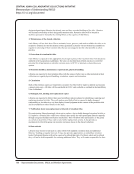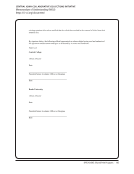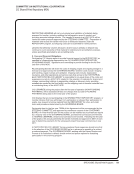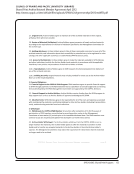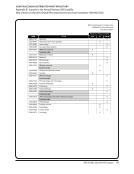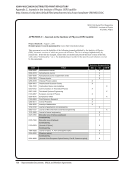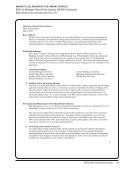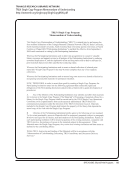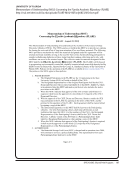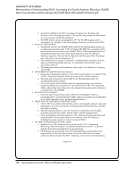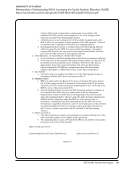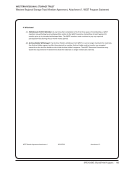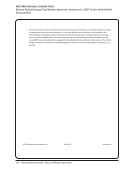SPEC Kit 345: Shared Print Programs · 73
First Withdrawal Based on Retention N=15
Year Responses
2003 1
2005 1
2008 2
2009 1
2011 1
2012 5
2013 3
2014 1
9. What environmental storage conditions are expected? N=21
Conditions All materials Some materials N
Conditions typically found in full-service libraries, open stacks 5 8 13
Conditions typically found in Harvard-like high-density storage facilities 5 8 13
No explicit policy 4 0 4
Total Responses 13 8 20
Comments N=11
Four of the five depositories are Harvard-like high-density storage facilities. The fifth one is a closed stacks facility.
Items are retained locally, as such, storage conditions vary per institution. Participants provide a description of their
facilities. Disclosure of this information is key for making informed collection management decisions and overall success
of the program.
Participation is location neutral, but due to space issues, most (approximately 90%) materials are housed at the Library
Service Center, an off-site facility.
Retention commitment and conditions both depend on risk level of material retention commitment is 10 years for low
risk material, 25 years for medium and high risk.
The library that accepts the items as a last copy decides where they will house the item. Locations of items include
circulating collection, rare book room, long-term storage, etc.
The primary goal of our Shared Copy Policy is to avoid duplicating holdings in our Harvard-style facility. Titles in the
facility are declared shared based on the discarding of duplicates received from other member libraries.
The temperature is maintained at 60 degrees Fahrenheit (+-2.5 degrees). Relative humidity is maintained at 50%
(+-4%).
Two members have robotic retrieval storage facilities incorporated in their buildings the other five hold retention items
in open stacks.
Until the high-density storage facility is operational, items are stored in one of two “medium density” storage facilities
that have environmental conditions at least equal to open stacks in full-service libraries.
First Withdrawal Based on Retention N=15
Year Responses
2003 1
2005 1
2008 2
2009 1
2011 1
2012 5
2013 3
2014 1
9. What environmental storage conditions are expected? N=21
Conditions All materials Some materials N
Conditions typically found in full-service libraries, open stacks 5 8 13
Conditions typically found in Harvard-like high-density storage facilities 5 8 13
No explicit policy 4 0 4
Total Responses 13 8 20
Comments N=11
Four of the five depositories are Harvard-like high-density storage facilities. The fifth one is a closed stacks facility.
Items are retained locally, as such, storage conditions vary per institution. Participants provide a description of their
facilities. Disclosure of this information is key for making informed collection management decisions and overall success
of the program.
Participation is location neutral, but due to space issues, most (approximately 90%) materials are housed at the Library
Service Center, an off-site facility.
Retention commitment and conditions both depend on risk level of material retention commitment is 10 years for low
risk material, 25 years for medium and high risk.
The library that accepts the items as a last copy decides where they will house the item. Locations of items include
circulating collection, rare book room, long-term storage, etc.
The primary goal of our Shared Copy Policy is to avoid duplicating holdings in our Harvard-style facility. Titles in the
facility are declared shared based on the discarding of duplicates received from other member libraries.
The temperature is maintained at 60 degrees Fahrenheit (+-2.5 degrees). Relative humidity is maintained at 50%
(+-4%).
Two members have robotic retrieval storage facilities incorporated in their buildings the other five hold retention items
in open stacks.
Until the high-density storage facility is operational, items are stored in one of two “medium density” storage facilities
that have environmental conditions at least equal to open stacks in full-service libraries.
















































































































































